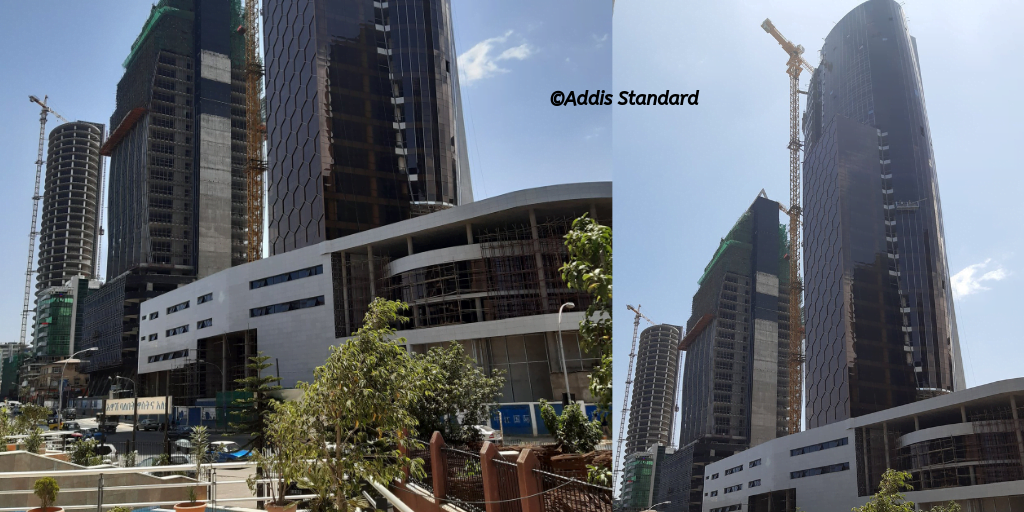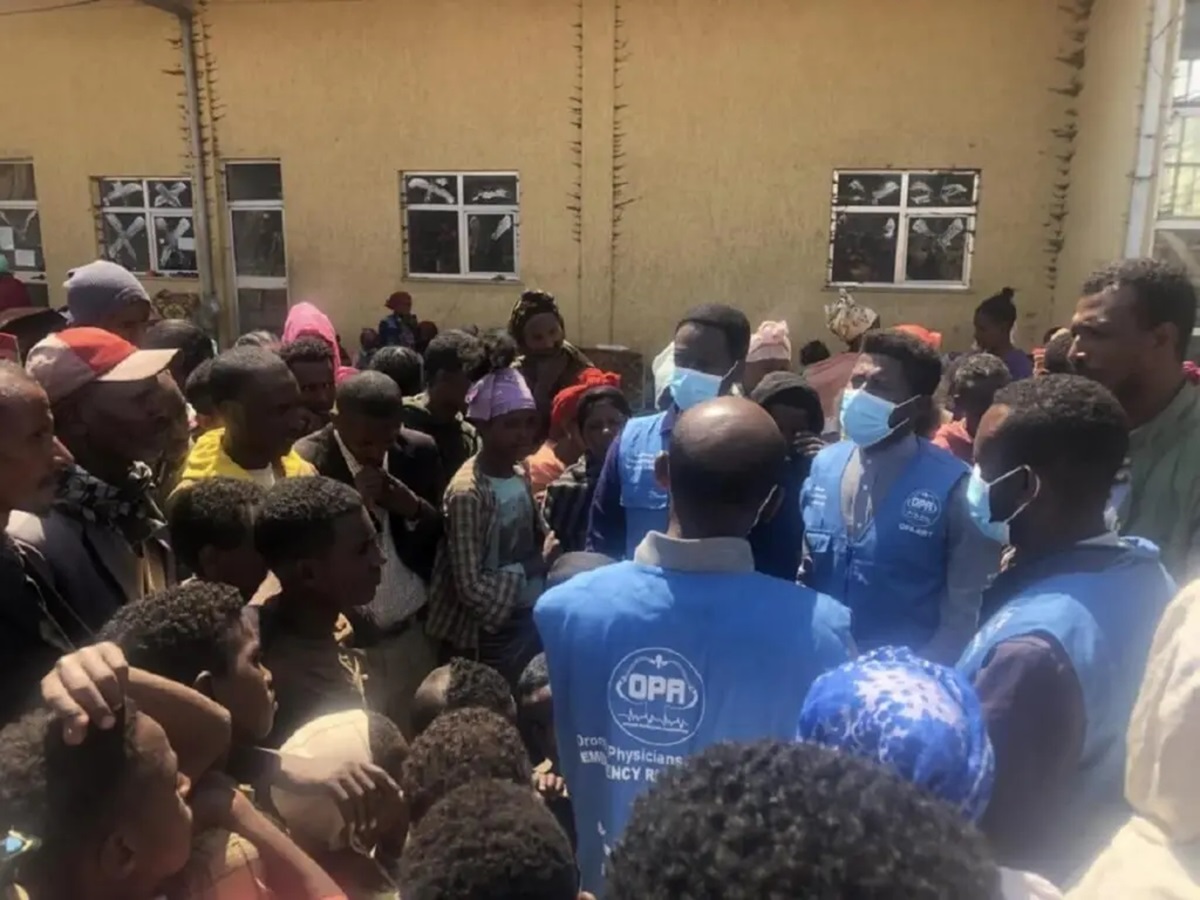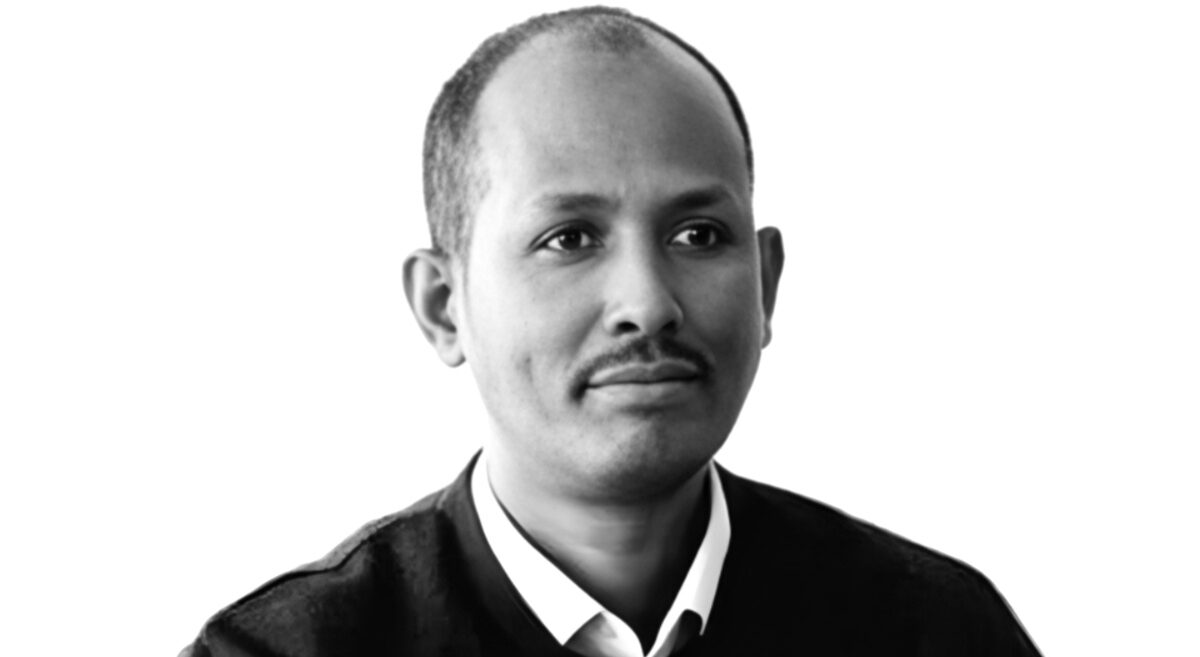Economic Analysis: Ethiopia’s Developmental State: Dead or Alive?

Belachew Mekuria, PhD, For Addis Standard
Addis Abeba, May 29/2019 – Ethiopia, a country of over 100 million people, the second most populous country in Africa and with a long history of statehood, serves as a stabilizing force in the sub-region. It is the regional capital hosting two wider continental institutions: the African Union and the UN-Economic Commission for Africa. It is in many senses a country that legitimately is a focus in any discussions related to the sub-region’s geopolitics. It has been under an imperial rule with some indications of constitutional monarchy, a socialist state under military dictatorship and a federal democratic republic, all within the span of the past half a century. Over the years, what has not changed is the state of poverty standing as a constant reminder to every government that more needs to be done in terms of ‘economic growth’, if not an all-round ‘development’.
The economic policy has also been in constant fluidity as the regimes change, except perhaps the land policy, which more or less continues to be used as an instrument of political coercion by the successive governments. ‘Developmentalism’ as an economic policy, where state activism in the economy is regarded as a must to bring structural economic transformation, has brought some concrete economic dividends (even in the face of brutal elite capture of resources for personal gains), making it one of the ten world’s fastest growing economies with a steady increase in per capita income which at the moment stands at $783 (which is 4% of the world’s average). This is more than 50% increase over the past 10 years. Life expectancy has also reached 65 years, which means an Ethiopian born in 2018 lives 15 years longer than an Ethiopian born in the turn of the century. GDP expanded from $30B to $80.56B in a span of the past eight years. Over the years, series of development policies have been formulated and implemented.
Therefore, developmental state with strictly censored political environment has delivered on the economic front. The government resisted all the pressures from the IMF and the WB for liberalization. The position on the part of the government has been to patiently wait for the right time, particularly in areas like banking, telecom and power. When it comes to the power sector for instance, the position has been instead of allowing profit-seeking private operators to come in and sell power for profit, the government sought to step up its efforts of encouraging manufacturing industries that engage in value adding activities for export using the highly subsidized power that is being supplied by the government. It has in consequence enabled the country incentivize and attract significant number of investments, largely Foreign Direct Investment (FDI). It hasn’t however helped in enabling the domestic private sector to grow in a manner that is aligned to the overall economic direction. Significant amount of local investments tended to focus on trade in finished goods and services and these in turn have for long been areas that do not require huge capital, but have greater returns and relatively shorter payback period. The tendency of domestic industries to focus on trading and services also undermined the development of skilled workforce with the capabilities to engage in industrial production. This is particularly true when one looks at the difference between Ethiopian workers’ relative efficiency managed by locals and those managed by foreigners on production floors.
The pathway towards industrial growth
The government has made good use of the late comers’ advantage even though it may not necessarily be regarded as pathway dependency. The policies and strategies have largely been drawn from extensive learning exercises, with particular focus on Asia. China played a huge role, though by no means was able to dictate directions and pathways. Structural economic transformation is accordingly regarded as the end game of eradicating extreme poverty, which continues to oppress a significant proportion of the country’s population. Industrialization through the growth of manufacturing is the pathway to change the structures of vulnerability to poverty. Two elements of this pathway relate to growth in manufacturing and private sector’s agency which initially to be led by the state.
Growth in Manufacturing
Until this day, manufacturing plays a marginal role in Ethiopia’s economy despite efforts to change the course. The service sector dominates the economy by contributing over 37% to the country’s GDP followed by agriculture which takes about 34%, industry 23% and a tiny contributor at 5.6% being manufacturing. The overall impact of the service sector in alleviating the country’s problems of trade deficit, shortage of hard currency and rising cost of living is however minimal. Though the sector absorbs a significant number of work-force, unemployment which at the moment stands at 19.1%, remains yet another challenge.
Two main reasons make the manufacturing sector important from this perspective. First the sector, particularly light manufacturing, is able not only to hire larger number of workers, but it also improves technical capabilities in societies overall. Second, the agricultural sector’s inefficiency partly emerges from its handling of excessive number of work-force. And releasing some of this surplus labor is expected to improve efficiency and yield of both the farm and farmers. Growth in the manufacturing sector is therefore regarded as the driver for industrialization, job creation and even agricultural transformation.
Private sector focused, but state-led
The position that the State should be an active player in the economy is in a sense founded on the idea that at the initial stage, the enablers for effective private sector growth must be put in place quickly and at a larger scale. These relate to power, road and railway infrastructure, industrial park spaces etc. These are not only expensive, but usually have a longer payback periods and thus less attractive for the private sector. In cases where they enthuse private sector investment, that only comes at the risk of higher profit margins, in other words exorbitant pricing to be shouldered by users. That has been, whether right or wrong, the view of the government for its resolve to actively engage in substantial infrastructure projects and other less attractive sectors in the economy. That has also led to the growth of the national road network; power generation; development of power plants; and railway network. The economic dividends of such policy are specifically observed in the country’s investment competitiveness enabling it to attract sizable number of FDI in the productive sectors focusing on export even in those difficult days where successive state of emergency declarations were in force.
China and the ‘debt’ myth
China has played a key role in the country’s drive of building massive infrastructure involving as financier and through its giant State-Owned Enterprises (SOEs), as contractor in a number of the projects. It is however blamed as putting Ethiopia and other African countries into a debt trap. While China’s economic dominance is becoming a force to reckon with, it has implicitly inspired a number of initiatives by the West to counter this growing dominance. Just to mention some of these initiatives the UK government’s Invest Africa program, the G20 Compact with Africa and its accompanying German government’s Special Initiative for job creation, and the US government’s BUILD Act (Better Utilization of Investments Leading to Development) recently enacted by Congress. All these initiatives approach the growth paradigm in the best way they know, and all have one thing in common: capitalizing the agency of the private sector. What they aim at is supporting reform initiatives in Africa and elsewhere in a manner that facilitate the crowding in of private investment through innovative financing instruments that embrace grants, loans, equity investments and other de-risking mechanisms. China however continues to prove itself as stronger and long-term partner in financing large infrastructure projects initiated by governments with developmental vision, though by no means invariably without any problems. For cautious borrower like Ethiopia however, its benefits outweigh any of the negative pictures that its competitors would like to paint against. With the new administration’s recent success in getting substantial concessions on its debts structures, Ethiopia remains in a good stand partnering with this global power.
Furthermore, public debt, so long as the money is strictly deployed for intended infrastructure and other legitimate purposes with long term developmental impact, should not be cause for alarm. Ethiopia’s public debt to GDP is about 33% while that of Japan’s, a country with the highest public debt in the world, is over 200% of its GDP. Similarly, that of China’s stands at 47% and the US 105%. What sets Ethiopia far apart from those rich countries is however, among other things, is the currency by which we borrow which is not, unlike those countries, our own currency. That would decidedly mean that the shock effect the debt has on their economies is minimal, if not nothing, considering they borrow in their own respective currencies. Under African standard, Ethiopia is ranked as the 35th in terms of debt public debt burden, meaning less burdened than countries like Rwanda, Uganda, Tanzania, Kenya and other 31 countries.
Hurdles along the way
The structural economic transformation is still a distant dream and the paucity of infrastructure, particularly energy will continue to undermine all efforts on industrialization. Among the plethora of constraints, an attempt is made to point out to some that directly relate to industrialization and the growth in manufacturing.
1 – Industrial workforce development
With 100 million plus population and with 18 years as the median age Ethiopia has the largest workforce that however require skills upgrading to become fit for industrial level production. Though education coverage is growing every year, it lacks the desperately needed linkage with industries and industrial culture. In a chicken and egg type of scenario, lack of industries is blamed for absence of industrial culture in the characters of the graduates, but the reverse could also be true. This is therefore one of the critical challenges that investors (home grown and foreign origin) experience and the claim that labor is ‘cheap’ becomes a myth because of the humongous expenditure that industrialists have to make to bring their workers (graduates and non-graduates alike) up to the required level of productivity. One should also add the notorious problems of absenteeism, tardiness and turnover that companies experience, almost all of which are attributable to lack of industrial culture.
2 – Lack of organic growth of the industries
The country’s attempt to encourage home-grown, locally owned industries in the manufacturing sector hasn’t materialised and for some, this even hasn’t started. Unlike many other countries’ experience of imposing a mandatory local content requirement on FDI, Ethiopia chose a different path, failing to exploit the learning possibility of locals by partnering with FDI. We rather follow a strategy of segregating areas of investment permitted for FDI and those ring-fenced for domestic investors. Legally enforced joint venture arrangements (through local content requirement) would however have provided a better opportunity for strengthening local manufacturing capabilities, if not organic growth of industries.
In the longest history of handwork and craftsmanship, there have also been trends that rather discouraged any form of skilful work, at times even trade. Agriculture appeared to be the noblest. For instance, the blacksmiths were regarded as having the spell of the evil eye (ቡዳ); those who do handwoven traditional garment were given various derogatory names like thread cutters (ቁጢት በጣሽ); the same for traders (መጫኛ ነካሽ). These forms of naming were felt so forcefully that it was claimed one of the early aspirants of modernity for Ethiopia, Emperor Menelik II, issued a stern warning legislation against anyone who gives derogatory names to ‘his hardworking people’ and advising to exercise restraint, otherwise it would be a cause for serious punishment. Though I haven’t come across a survey, one may also find truth in this if an analysis is made on preferences of academic fields in our early educational development. Management, law and other social science fields attracted more students than the technical ones. It is within this context that the 70%/30% ratio of natural science (engineering and others) to social science has been adopted, with a view to have more graduates that ‘make money and less of those that count it.’
Access to finance, complicated procedures for start-up businesses particularly the SMEs, lack of local inputs/heavy reliance on imported inputs which in turn is constrained by lack of foreign currency all have conspired to undermine the active engagement of domestic industrialists in the manufacturing activities.
3 – Trade logistics
Logistics is the key element that facilitate productive investment as inputs will have to be imported and products exported under the tight lead-time requirement of international and local market. Under the two drivers of logistics efficiency (cost and lead time), Ethiopia scores very low. The State monopoly on transnational movement of goods has partly contributed for some of the avoidable efficiency related challenges. However, lack of access to major international water bodies for relatively cheaper and reliable means of transport is one singular cause of trade logistics inefficiency the country experienced over the years. Ethiopian Airlines as government owned flag carrier has done remarkable job in facilitating cross border movement of goods and people. However, it may not come as a comparable alternative to sea transport, particularly in terms of cost efficiency. Other relatively easier constraints of our own making relate to cumbersome/unnecessary documentation requirements, lack of simplified and harmonized trade logistics procedures and failure to integrate the risk management systems. These are, as has repeatedly been indicated by many studies, easily avoidable and if addressed, profoundly improve trade logistics efficiency. A number of initiatives are underway which no doubt will cut both the cost and lead time by significant proportion once put into effect.
4 – Trade deficit
Excessive imports for the purposes of the mega projects together with higher reliance on imported commodities for local consumption (particularly due to the construction boom) has taken the country on a free-ride to excessive deficits in trade. Export is low both in volume and value. The country for instance doesn’t still have champion product and its hopes are hinged on improved yield in agriculture. Though sesame and coffee are the best candidates, the latter is affected by higher domestic consumption compared to export and when it comes to sesame our inability to capture some of the values within Ethiopia through some level of processing makes the earnings from exporting the raw product very minimal. Therefore, working on factors lying at the intersection of agricultural productivity and industrial processing would be critical to change course and correct the overall negative balance of trade. This needs to be done by focusing on particular champion product with traceability, collective effort to promote the product at global level with technologically supported branding and by doing some value adding processes locally along the value chain.
What of developmental state as most knew it?
At a fundamental level the challenges highlighted above have for long constrained the country’s efforts to achieve structural economic transformation through the instrumentality of developmental state policy. However, what is being envisioned requires consistency, continuity and determination at all levels which at the moment appear to be experiencing some level of a shock in transition. The country stands at cross roads tangled by tough choices to be made to either part ways with the past approach of developmental state or build on it, by picking the key success factors, and making adjustments in a manner that helps the new administration to meet the youth’s high expectations to which the transition owes a great deal. Full and/or partial privatization of some of the SoEs must be done without forfeiting developmentalism. The state, both as regulator and, in some instances, as an active player in developmental projects is still needed with some adjustment on the highly centrist approach that for long and unhelpfully side-lined the regional governments. China’s experience with respect of putting its Provinces at front and center of economic and social policy making/implementation in a manner that is suited to their circumstances should offer us a very useful lesson. AS
___________________________________//_________________________________
Editor’s Note: Belachew Mekuria (PhD), was former commissioner of the Ethiopian Investment Commission. He can be reached at belachewmekuria@gmail.com







